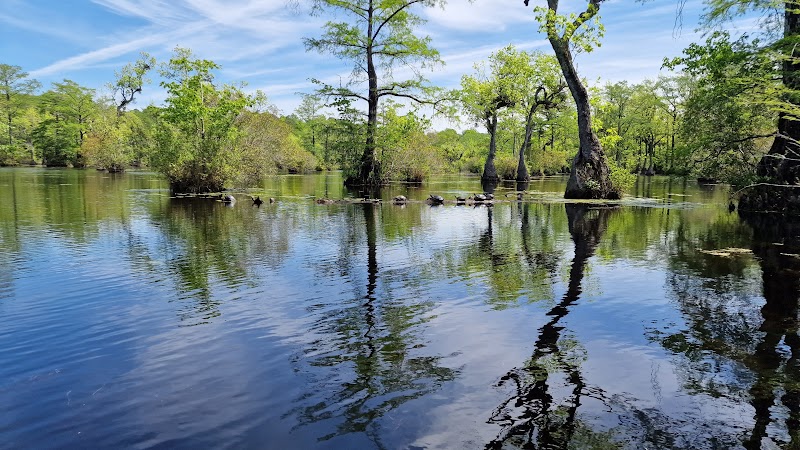
Racing the Currents: The Thrill of the Hopewell Regatta in Virginia
Experience the adrenaline of the Hopewell Regatta, a dynamic paddling race on Virginia's James River. Whether you're racing or spectating, this event offers action-filled engagement with nature’s currents, practical challenges, and community spirit.
Start Early to Catch Calm Waters
Morning conditions are generally calmer with fewer winds, providing smoother paddling and safer racing. Plan to launch early to get the edge on changing afternoon weather.
Wear Proper Footwear
Secure, water-resistant shoes with good grip are necessary for launching and landing on varying shorelines along the river.
Stay Hydrated Throughout
Modified hydration plans are crucial, especially on sunny days as reflections from the water intensify heat exposure. Use water-resistant bottles or hydration packs.
Scout the Course in Advance
Familiarize yourself with river bends and key markers before race day. This can improve navigation and safety during fast-flowing sections.
Racing the Currents: The Thrill of the Hopewell Regatta in Virginia
The Hopewell Regatta isn’t just a paddling race — it’s a pulse-driven collision between human grit and Virginia’s flowing waterways. Taking place on the winding James River right in Hopewell, this event offers racers and spectators a firsthand experience of nature that’s as dynamic as the currents themselves. Here, the river challenges every stroke, pushing paddlers forward with a lively urgency and testing endurance against its ever-shifting flow.
The course spans approximately 7 miles downstream, with racers navigating around natural bends and man-made markers that punctuate this fast-moving playground. Though the terrain is water, the surrounding landscape plays its part: clusters of towering hardwoods and patches of thick marsh grass lean toward the shore, their rustling leaves whispering encouragement—or perhaps warnings—to those on the water.
Preparation is key. Paddlers should expect a race lasting between 1.5 to 2 hours depending on skill and current conditions. The water temperature can be brisk in spring but warms by late summer, demanding hydration strategies and suitable gear, like quick-drying paddling attire and reliable footwear for launching and exits. Timing the start early in the morning can also mean smoother conditions, as afternoon winds often stir the river into a more combative state.
Beyond the technical, participants engage with a river fiercely itself — a living pathway that refuses to be tamed but invites cooperation. Waves dare you to match their rhythm. Currents push with steady hands, reminding paddlers that in this race, respect and rhythm matter more than sheer force.
Spectators can take advantage of scenic riverbanks marked by open spaces, perfect for setups with picnic blankets and folding chairs. The Hopewell Regatta also offers an opportunity to witness a regional tradition where camaraderie meets competition, where community spirit flows as freely as the water beneath the boats.
Whether you’re an expert kayaker, a weekend canoeist, or an outdoor enthusiast looking for a unique event, the Hopewell Regatta delivers. It invites you to feel the pulse of the James River, to meet the element halfway, and to push your limits through practical adventure. If you come to paddle, come ready — with focus, respect, and the eagerness to meet the river on its terms.
Nearby Trips
All Adventures
Boat Charters
Water Activities
Adventures near Hopewell, Virginia
Discover the unique and memorable adventures that make Hopewell, Virginia special.
Frequently Asked Questions
Is prior paddling experience necessary to enter the Hopewell Regatta?
While beginners can participate, some experience paddling on moving water is highly recommended due to river bends and currents that require skillful navigation and control.
Are there safety measures in place during the race?
Yes, safety personnel are stationed along the course with rescue boats and medical staff ready to respond quickly in case of emergencies.
Can spectators watch the entire race from one location?
Since the course stretches over 7 miles, spectators are encouraged to pick vantage points near the start, finish, or accessible riverbanks to catch top action scenes.
What kind of wildlife might I see during the event?
Look out for ospreys swooping overhead, river otters darting near shore, and seasonal waterfowl weaving through marsh grasses along the banks.
Are there local regulations paddlers must follow?
Participants must follow all race rules, including no littering, respecting private property adjacent to the river, and adhering to environmental guidelines to protect the James River ecosystem.
Is the race open to all types of paddling vessels?
The event primarily features kayaks and canoes, with specific classes allowing various boat types. Check the event guidelines for approved vessel specifications.
Recommended Gear
PFD (Personal Flotation Device)
A U.S. Coast Guard approved PFD is required for safety and flotation in the river’s unpredictable currents.
Waterproof Paddle Bag
Keeps essentials dry and secure, especially useful if afternoon showers or splashes are expected.
Quick-Dry Clothing
Helps maintain comfort by shedding water quickly, reducing chafing and heat loss.
Water-Resistant Footwear
Supports gripping riverbanks and obstacles during launch and exit points while protecting feet.
Local Insights
Hidden Gems
- "The secluded Sand Point overlook near the halfway marker offers rare quiet and perspective over the river’s bend."
- "Quiet side channels accessible by kayak provide sheltered spots where wildlife congregate undisturbed."
Wildlife
- "Bald eagles nesting in the large riverfront trees."
- "Beaver activity seen through freshly gnawed tree stumps along the banks."
History
"Hopewell’s history as a former industrial town along the James River shapes the river access points, with remnants of old docks still visible, connecting past commerce to today’s recreational use."
